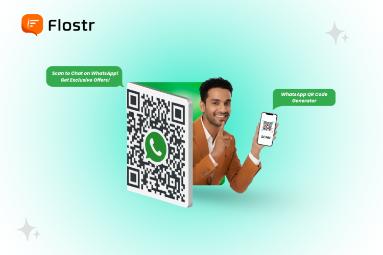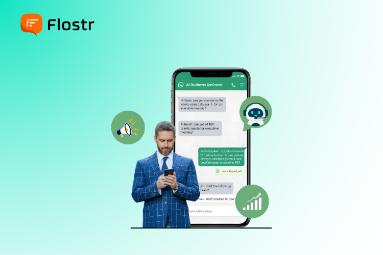How to Boost Team Efficiency Using WhatsApp Shared Team Inbox
Struggling to manage WhatsApp chats and keep track of who replied to each customer? If it sounds similar, you are not alone. This is the same issue experienced by many growing businesses: They interact with customers too frequently but lack consistency. WhatsApp has opened up as a strong communication tool to brands. WhatsApp Shared Team Inbox brings all customer discussions under a single WhatsApp number, and your entire team can see them, respond, and collaborate on a single dashboard. There will be no more duplicate responses, lost messages, or time wastage in working on different devices. What Is a WhatsApp Shared Team Inbox? WhatsApp Shared Team Inbox is a tool that can be easily integrated with WhatsApp Business API and allows multiple users to process the messages in real-time using one WhatsApp business number. Your team will be able to conduct discussions collaboratively using a single platform, instead of logging into various accounts or devices. Here's how it works: The team shared inbox is used to display all incoming messages that can be seen by all members of the assigned teams. Every dialogue will be tagged, assigned, or commented upon within the company without the customer knowing about it. It is easy to trace who is addressing whom and also to keep track of the response time by the managers. You Want Explore Feature: WhatsApp QR Code Generator: Convert Every Scan into a Business Opportunity In contrast to the usual WhatsApp Business App, which has a single device and a single user, a shared team inbox will enable all of your team to collaborate. It is answering the support requests, leading follow-up, or broadcasting messages on WhatsApp; either way, this feature will not leave any chat unattended. The Challenges of Managing Messages Without a Shared Inbox Before using a shared inbox, most companies have the issue of disorganised communication and delayed responses. The following are some of the challenges that teams have to deal with in the absence of this tool: Missed or Duplicated Replies: Multiple employees will have different devices or different numbers, and thus, there is always a risk of missing a message or being sent twice. Lack of Visibility: The managers are not clear about who attended to a specific customer or how a problem was solved. Delayed Responses: In the absence of centralised access, members of the team will have to hand over the message manually, resulting in delayed responses and irritated customers. Inefficient Collaboration: Teams use third-party applications, such as email or Slack, to discuss customer problems, which is a waste of time because they have to change between applications. Data Inconsistency: It is also hard to maintain the continuity of the conversation without a common history, and it mainly occurs when the customer is communicating with more than one agent. They may cause low productivity and dissatisfaction with the customer; a business cannot afford to lose these. The solution? A WhatsApp Shared Team Inbox that turns disconnected communication into a team-based system. You May Also Like: How WhatsApp Business Analytics Improve Your Marketing Strategy How a WhatsApp Shared Team Inbox Improves Team Efficiency By introducing WhatsApp Shared Team Inbox, it is not only a case of convenience, but it is a change in the way teams will be working. We can take a look at the way it helps to increase efficiency at various levels: 1. Centralised Communication Customer conversations have their history stored on one dashboard, which is accessible by all members of your team. It saves the situation of having to check multiple accounts or devices, a problem that creates confusion and delays. And there will be a smooth transition between the agents and a consistent customer response. 2. Real-Time Collaboration Shared inbox enables multiple agents to see, label, and assign chats in real-time. The team members can add in-house notes or mention others so as to collaborate on some challenging problems - without changing platforms. 3. Automated Chat Assignment and Notifications Under the automation, you will be able to automatically allocate any incoming chats to a particular team member or department. Real-time messages make sure that no message is missed and all inquiries are answered in time. 4. Data Transparency and Context Customer details, history of conversation, and past interaction are displayed in a single place for each agent. This guarantees the use of contextual communication and reduces redundant messages, such as asking them to repeat the problem. 5. Integration with WhatsApp Chatbot for Business Another efficiency level is combining your WhatsApp Shared Team Inbox with a WhatsApp Chatbot for Business. Chatbots can deal with frequently asked questions and general queries 24 hours a day, and send any complicated questions to the shared inbox, where they can be responded to manually. 6. Unified Analytics and Monitoring The shared inbox provides the managers with helpful information about the agents' performances, response rates, and volume of chat. Such analytics would help in making staffing decisions, training requirements, and process enhancements, which are all required to scale your operations effectively. Practical Use Cases Across Business Functions The WhatsApp Shared Team Inbox is flexible and can be used in different types of use by various departments. We can discuss how it can be used in other business functions: Customer Support Teams The customer service representatives can operate together to handle a massive number of requests without redundant answers. They have access to shared customer data and chat history, which enables them to give coherent, informed responses, even in cases where one agent transfers to another. Sales Teams Sales reps will be able to react to leads quickly, provide real-time updates, and be transparent along the sales funnel. The WhatsApp broadcast message can be used as an automated follow-up to re-engage leads in due time. Marketing Teams The inbox allows the marketing departments to monitor the interactions of the campaigns involving WhatsApp buttons to businesses or QR codes. Any leads that are created as a result of a campaign can always be channelled to the relevant member of staff immediately. Operations and Logistics By working together in the shared inbox, operations teams are able to synchronise delivery times and keep the customers informed about the status of their orders, as well as to address problems more quickly. With a WhatsApp Shared Team Inbox, all departments stay in touch and on track, and improve relationships with customers. How to Get Started with a Flostr Shared Team Inbox Flostr Shared Team Inbox is an easy and uncomplicated implementation. Here's how you can get started: 1. Catch Every Message Effortlessly All conversations are found under a single inbox, and real-time notification makes sure that your team will reply instantly. There is no loss of message, and conversations are continuous, and customer interaction is smooth. 2. Assign Chats with Ease One-Click Distribution Share conversations easily through the WhatsApp Shared team inbox. Deliver messages to the appropriate colleague, monitor approvals, and hold oneself accountable. It provides effective cooperation and ownership to facilitate teams in controlling conversations without duplication. 3. Reply Like an Expert Send professional, personalised replies through pre-created templates through the WhatsApp Shared Team Inbox. Insert photographs, links or additional information to make responses more effective. All messages are always consistent, correct, and customer-oriented in a way that is professional and at the same time has a human touch. 4. Speed Up with Quick Replies Answering in less time using quick reply features in the WhatsApp Shared Team Inbox. Order greetings, frequently asked questions and follow-ups with a single click. It will save time, reduce repetition in typing, and enable your team to be effective and accurate in serving more customers. 5. Wrap Up and Move Forward WhatsApp Shared Team Inbox status is updated, and closed chats are done immediately. Record the past discussions, learn, and enhance the performance of the team. Each of the interactions will be a learning experience, as they will make your team organised, efficient, and ready to take on queries in the future. Final Thought The WhatsApp Shared Team Inbox will enable your business to remain ahead in a world where customers want instant responses and a smooth flow of interaction. It fills the gap between automation and human interaction - delivering faster communication, enhanced cooperation, and customer satisfaction. Combining your common inbox with WhatsApp Chatbot for Business with broadcast messages and WhatsApp buttons for business will make your team provide a unified communication experience at scale, which will facilitate growth and build trust. In case you are aiming to work better and be more connected with your customers, the best direction to take is to install a Flostr Shared Team Inbox. It is not only about managing messages, but also a way of turning your messages into a competitive advantage. Frequently Asked Questions (FAQs) About WhatsApp Shared Team Inbox 1. What exactly is a WhatsApp Shared Team Inbox? A WhatsApp Shared Team Inbox is a centralized dashboard connected to one WhatsApp Business number where multiple team members can view, respond to, assign, and collaborate on customer messages in real time. 2. How does it differ from the standard WhatsApp Business App? The standard WhatsApp Business App allows only one user to manage chats on a single device. A shared team inbox enables multiple agents to handle conversations simultaneously, assign chats, add internal notes, and ensure no message is missed. 3. Can messages get duplicated or missed when multiple agents work together? No. A shared inbox provides visibility, chat assignment, and status tracking, ensuring that no message is missed or duplicated among team members. 4. Will customers know that multiple agents are responding? No. The customer sees a single, seamless chat experience. Internal notes, tagging, and assignments are visible only to the internal team. 5. How does chat assignment or routing work? Chats can be automatically or manually assigned to specific agents or departments based on predefined rules, availability, or expertise, ensuring faster responses and better accountability. 6. Can I integrate a chatbot with the shared inbox? Yes. Chatbots can be integrated to handle routine queries or FAQs, and when a more complex issue arises, the chat can be seamlessly transferred to a human agent. 7. What analytics or reports are available? The shared inbox provides insights like response time, chat volume, agent productivity, and customer satisfaction trends, helping teams identify areas for improvement. 8. Which teams can benefit from a WhatsApp shared inbox? Customer support, sales, marketing, and operations teams all benefit by managing conversations collaboratively, improving communication efficiency, and ensuring faster issue resolution. 9. How can my team start using a WhatsApp shared team inbox? Simply connect your WhatsApp Business number to a shared inbox platform like Flostr, invite your team members, set assignment rules, and start managing all customer chats from one unified workspace. 10. Are there any challenges with using a shared inbox? There might be a short learning curve for new users. However, with proper training and clear internal processes, teams quickly adapt and enjoy improved coordination and productivity.








